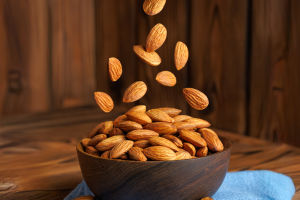Imagine this: you've carefully chosen a healthy ingredient—say, a bowl of brown rice or a banana—and yet, your blood sugar still spikes.
The problem might not be what you're eating, but how you're pairing it. For people with diabetes, understanding the impact of food combinations can be a game-changer.
It's not about avoiding carbs altogether, but about combining them smartly with protein, fiber, and healthy oils to create a steady blood sugar response.
Let's dig into how you can build these ideal combinations, with real examples that are both practical and delicious.
Why Pairing Matters for Blood Sugar
The glycemic impact of a food isn't set in stone—it can change depending on what else you eat with it. A carbohydrate eaten alone may cause a sharp spike in glucose, but if you add a source of protein or fiber, that spike can be softened and slowed down.
Registered dietitian Jill Weisenberger, MS, RDN, explains, "When you combine a high-fiber food or a protein-rich item with a carb, the digestive process slows down. That helps you feel full longer and avoids blood sugar swings." It's about managing not just what's on your plate, but how it works together.
1. Whole Grains + Protein
Whole grains like quinoa, bulgur, or barley are much better than refined grains, but they still contain carbohydrates. The trick is to pair them with a clean protein source.
Examples:
• Quinoa + grilled salmon
• Barley + tofu stir-fry
• Brown rice + lentils
This combination helps reduce the glycemic response of the grains while boosting satiety. It's especially helpful for managing post-meal glucose levels.
2. Fruit + Nut Butter
Fruits are packed with fiber and antioxidants, but they still contain natural sugars. Instead of cutting them out, try pairing them with healthy oils and a little protein.
Try these combos:
• Apple slices + almond butter
• Pear + a handful of walnuts
• Berries + a spoon of unsweetened sunflower seed butter
This duo helps keep your energy steady and delays the absorption of sugars, making fruits a much safer and satisfying snack.
3. Leafy Greens + Healthy Oil
Greens like spinach, kale, and arugula are low in carbohydrates and high in fiber. They also contain oil-soluble vitamins, which are better absorbed when eaten with healthy oils.
Great combos include:
• Spinach salad + olive oil dressing
• Kale + avocado
• Romaine lettuce + tahini-based dressing
Not only does this improve nutrient absorption, but it also supports insulin sensitivity—a key factor in diabetes management.
4. Legumes + Vegetables
Legumes such as chickpeas, lentils, and black beans are high in both complex carbs and protein. When combined with non-starchy vegetables, you get a fiber-rich, nutrient-dense dish that keeps blood sugar in check.
Sample pairings:
• Chickpeas + roasted zucchini and red pepper
• Lentil soup + side of sautéed greens
• Black bean tacos with cabbage slaw
This combo also works well for meal prepping—it keeps well and tastes better the next day.
5. Plain Yogurt + Seeds
Plain yogurt is an excellent source of protein and probiotics, which can improve gut health and support metabolism. When paired with seeds like flax or chia, you add a boost of fiber and omega-3 fatty acids.
Ideas to try:
• Plain yogurt + chia seeds + cinnamon
• Yogurt parfait with flaxseed and fresh blueberries
• Cucumber + yogurt dip with sunflower seeds sprinkled on top
This snack (or breakfast) is balanced, creamy, and supports slow glucose release.
6. Sweet Potatoes + Cottage Cheese
Sweet potatoes are high in nutrients but still raise blood sugar if eaten alone. Adding a source of dairy protein like cottage cheese or plant-based yogurt balances the dish and makes it more satisfying.
Try this plate:
• Roasted sweet potato + cottage cheese + chives
• Baked sweet potato with tahini drizzle and chia seeds
• Mashed sweet potato with plain yogurt and nutmeg
These combinations make an excellent base for a hearty lunch or a filling afternoon snack.
Small Adjustments, Big Impact
Managing diabetes isn't about deprivation—it's about knowledge. Pairing foods the right way doesn't just make meals healthier, it makes them more satisfying too. These combinations can prevent energy crashes, reduce insulin spikes, and even help with weight management over time.
And remember, it's okay to experiment. Not everyone responds the same way to each food pairing, so consider using a glucose monitor or keeping a simple food journal to track what works best for you.
Over to You
Have you found any food combinations that help you stay full longer or keep your energy steady? Try experimenting with one of the pairings above this week—and if you notice a difference, you're already one step ahead in managing your blood sugar smarter, not harder.
Want a weekly guide on smart ingredient combos? Let me know—I'd be happy to build it!


